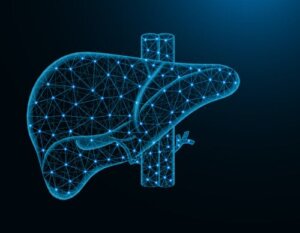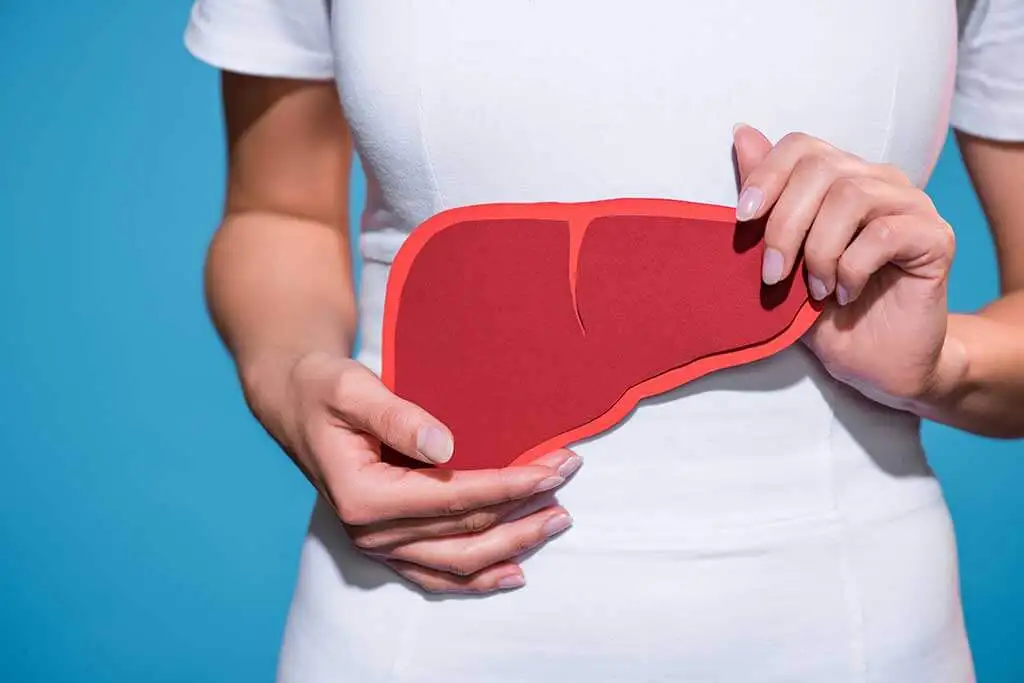Portal Hypertension: Causes, Symptoms, Diagnosis and Treatment


Written and verified by the doctor Mariel Mendoza
Portal hypertension refers to increased pressure within the portal vein and its branches. The portal vein transports blood from the intestine to the liver, from which it enters the heart and general circulation.
Because the portal vein passes through the liver, the causes of portal hypertension may be intrahepatic or extrahepatic. The latter will be pre-hepatic (before the liver) or post-hepatic (after the liver).
Symptoms are variable. Cirrhosis of alcoholic origin and viral hepatitis are the main causes of portal hypertension today.
Hepatic blood flow and portal hypertension
Normal hepatic blood flow is usually about 1.5 liters per minute, which represents 15% to 20% of cardiac output. Portal pressure is modifiable by intra-abdominal pressure.
A wedge catheter at the level of the hepatic vein, with an approach through the jugular or femoral vein, is used for its measurement. The hepatic venous pressure taken when the catheter is wedged is called the wedged hepatic venous pressure.
After the catheter tip is released into the hepatic vein, the free hepatic venous pressure is obtained. When the value of one is subtracted from the other, the hepatic venous pressure gradient is obtained.
If the hepatic venous pressure gradient is greater than 6 millimeters of mercury (mmHg), portal hypertension is considered to be present. It can also be defined as an intrasplenic pressure greater than 15 mmHg or a direct portal vein pressure greater than 21 mmHg.

The causes of portal hypertension
Obstruction or resistance to portal flow can be extrahepatic or intrahepatic. Among the latter, liver cirrhosis is the main cause. In this case, there’s an alteration in the structure of the liver, which hinders the passage of blood through the circulation, which in turn causes a consequent increase in the pressure within the portal system.
Cirrhosis due to chronic alcohol consumption or viral hepatitis (particularly chronic hepatitis C) is the most prevalent form of this condition. Chronic use of drugs (such as methotrexate), the presence of non-alcoholic fatty liver disease, or congenital hepatic fibrosis can also cause it.
The presence of portal vein thrombosis is the main pre-hepatic cause. On the other hand, inferior vena cava obstruction is the prevalent post-hepatic cause.
Other post-hepatic causes may be chronic heart diseases, such as heart failure, restrictive cardiomyopathy, or constrictive pericarditis. Increased pressure within the heart leads to increased retrograde pressure, and this explains portal hypertension.
We think you may be interested in reading this, too: How to Change Your Lifestyle if You Have Hypertension
The development of portal hypertension
Increased pressure within the hepatic circulation is transmitted retrograde to other veins of the digestive tract and to the spleen (splenic circulation). Then, constriction of the blood vessels of the hepatic circulation and dilatation of the vessels of the splenic circulation occurs.
In addition, the blood seeks an alternative route to reach the general circulation. That’s when so-called collateral vessels develop, which don’t pass through the liver. Instead, they directly connect the portal system to the veins that reach the general circulation.
The collateral circulation that occurs in portal hypertension predominates in the esophagus and upper stomach. Because they handle high pressures, they’re fragile and prone to bleeding. They also often develop in the abdominal wall and rectum.
Bypassing the liver causes toxins that are usually cleared by the liver to reach the general circulation and may ascend to the central nervous system and cause hepatic encephalopathy. The increased pressure in the circulation causes leakage of protein-rich plasma, which accumulates within the abdomen.
On the other hand, increased splenic pressure causes interference with blood flow from the spleen to the portal vessels. This leads to increased volume in the spleen, with decreased functionality.
Like this article? You may also like to read: Hypertension in Pregnancy: Everything You Need to Know
Complications
Although portal hypertension itself does not cause symptoms, it’s associated with multiple signs of its complications:
- Swelling or edema in lower limbs.
- Ascites or accumulation of fluid inside the abdomen.
- Abnormal growth of the spleen (splenomegaly) with decreased function (hypersplenism): destruction of red blood cells (anemia), white blood cells (leukopenia), and platelets (thrombocytopenia). Splenomegaly may cause pain in the left upper abdomen.
- The appearance of esophageal veins that may bleed, causing upper gastrointestinal bleeding (bloody or tarry black stools and bloody vomiting).
- Hemorrhoids that may bleed (blood in the stool).
- Hepatic encephalopathy that’s manifested mainly by confusion, drowsiness, forgetfulness, and agitation.
Diagnosis of portal hypertension
Diagnosis of portal hypertension is based on symptoms and physical examination findings. The physician relies on imaging studies (ultrasound, computed tomography, and magnetic resonance imaging) to visualize blood circulation and detect the presence of free fluid in the abdomen.
To determine the cause of liver cirrhosis, a biopsy is performed.

Treatment of portal hypertension is complicated
Treatment depends on complications and works in a limited number of cases. It should start with a low-salt diet and the use of diuretics to decrease fluid retention. It’s also recommended to reduce the amount of protein in your diet.
Nitrates, which produce direct intrahepatic vasodilation, can be included to reduce pressure within the portal vein as well as beta-blockers and octreotide, which reduce vasodilation in the splanchnic circulation.
Lactulose works to treat confusion in cases of encephalopathy. Paracentesis is used to remove fluid accumulated in the abdomen directly.
When the above did not work or if upper GI bleeding occurs, urgent treatment is necessary.
An upper GI endoscopy is often used to stop bleeding with sclerotherapy (a solution is injected into the varices) or ligation (elastic bands or rubber bands are used to block the blood supply to the varicose veins). When bleeding is not successfully controlled, decompression procedures may be needed, which are surgical and risky.
In the late stages of liver disease, liver transplantation may be the only way to go. However, surgery is reserved for cases that have no other solution.
Portal hypertension has a prognosis that depends on many things
The prognosis of portal hypertension depends on its cause, the patient’s age, and associated diseases. The complications that have developed also determine much of the scenario.
The most serious complication is esophageal variceal rupture, as it triggers upper gastrointestinal bleeding. This situation constitutes a medical emergency.
All cited sources were thoroughly reviewed by our team to ensure their quality, reliability, currency, and validity. The bibliography of this article was considered reliable and of academic or scientific accuracy.
- Ibarrola J, et al. Hipertensión portal. Acta Médica Grupo Ángeles 2011;9(2). Disponible en https://www.medigraphic.com/pdfs/actmed/am-2011/am112d.pdf.
- Montaño-Loza Aldo, Meza-Junco Judith. Patogénesis de la hipertensión portal. Rev. invest. clín. 2005;57(4). Disponible en http://www.scielo.org.mx/scielo.php?script=sci_arttext&pid=S0034-83762005000400013&lng=es.
- Narváez R, et al. Consenso Mexicano de Hipertensión Portal. Revista de Gastroenterología de México 2013;78(2). Disponible en https://www.sciencedirect.com/science/article/pii/S0375090613000293.
- Puente, A., et al. “Hipertensión portal.” Medicine-Programa de Formación Médica Continuada Acreditado 13.6 (2020): 308-315.
- Andrade, Luis Adrián Muñoz, et al. “Aspectos fisiopatológicos en la hipertensión portal.” RECIMUNDO 5.1 (2021): 42-49.
- Buey, L. García, F. González Mateos, and R. Moreno-Otero. “Cirrosis hepática.” Medicine-Programa de formación médica continuada acreditado 11.11 (2012): 625-633.
This text is provided for informational purposes only and does not replace consultation with a professional. If in doubt, consult your specialist.








